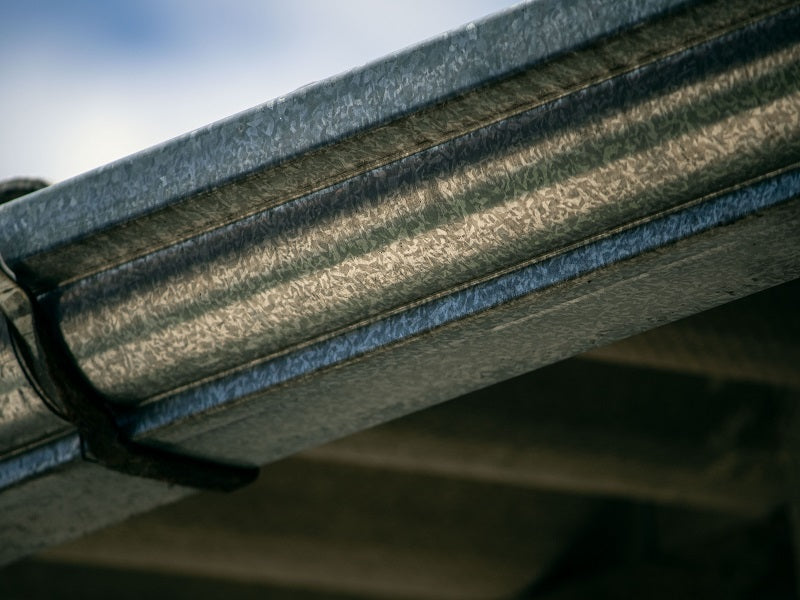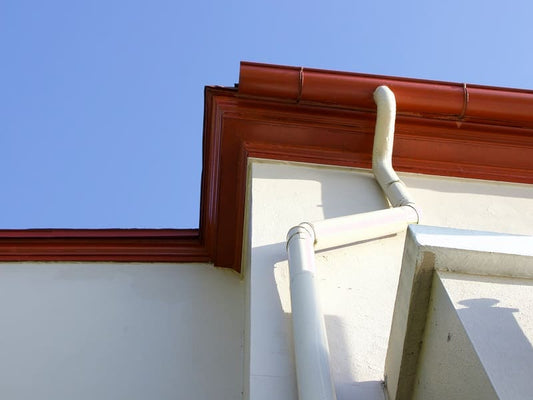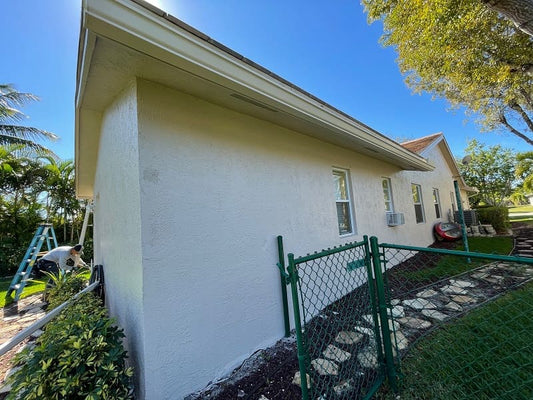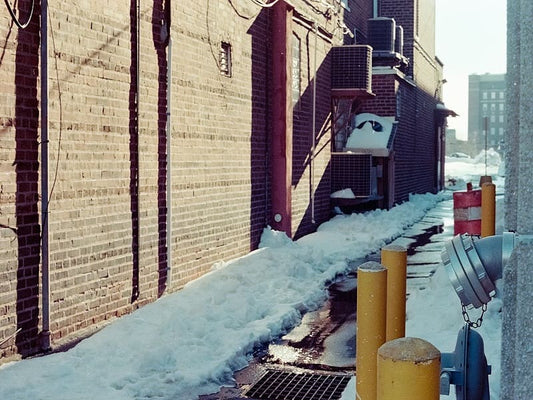
5 Tips For Gutter Hanger Spacing And Placement | Art of Gutter
5 Tips For Gutter Hanger Spacing And Placement
Your local climate determines the best gutter hanger spacing for you. The hangers can be positioned near the center in warmer areas, with no more than 36 inches (3 feet) between them. On the other hand, cooler areas necessitate gutters that can take heavy snow and ice for extended periods. In this example, the spacing has to be half the maximum distance or no more than 18 feet. Incorrect positioning might cause sagging in some areas. When installing new guttering, determining how to place a gutter hanger merely takes precise measurement. Some measures will be established solely by individual scenarios and your specific project's distinctive size and parameters; however, some formulas may be observed to assist.
In this article, you will explore gutter hangers and some tips for gutter hanger spacing.
What Is the Purpose Of A Gutter?
The main purpose of a gutter is to protect your home from water damage, which is required since excessive rainwater and moisture may damage a structure's foundation and its outside and interior walls. Even in arid climes, too much moisture is undesirable.
What Are Gutter Hangers?
When it comes to gutter installation, there are a few methods that experts use. Using gutter hangers is critical throughout the gutter installation procedure. Gutter hangers allow the installer to secure the gutter system while it is being attached to the house. Furthermore, hanger spacing for gutters determines how much heavy rain may be safely diverted by each common gutter. A gutter hanger is a load-bearing gutter support structure. Keep in mind that gutter hangers come in a variety of styles. Gutter hangers include hidden hangers, spikes, straps, ferrules, and brackets. Gutter hangers, like gutters, come in a range of materials.
Is Gutter Hanger Spacing Critical?
Gutter hangers must be appropriately spaced to give enough support. They may not be able to offer enough support if they are too far apart, leading portions of your gutters to slump. Gutter hangers should be positioned at most three feet apart as a general rule. If you live in a cold region, experts may suggest spacing gutter hangers two feet apart to accommodate the extra weight of snow and ice.
What If Gutter Hanger Spacing Fails?
If the installation was done correctly and the hangers were appropriately spaced, you shouldn't have to worry about damage.
However, if one of the hangers fails, the weight distribution becomes unequal. The debris buildup will put a strain on the other gutter hangers.
Types Of Gutter Hangers
Here is a list of different types of gutter hangers:
l Ferrules And Spikes
This hanger style secures the gutter system to the fascia, the long, narrow board that runs along the edge of your roof, using a spike inserted through a metal tube or ferrule.
Advantages: Spikes and ferrules are affordable and simple to install.
Disadvantages: Metal expands and shrinks with temperature changes. The spikes and ferrules might become loose when this expansion/contraction cycle is repeated. If you have wooden fascia boards, there may be better options than this; as the spike is driven across the fascia board, it fractures the wooden surface, increasing the danger of moisture damage.
l Straps And Brackets
Half-round gutters are installed with this style of gutter hanger. Due to their form, half-round gutters cannot be put directly onto the fascia board. Instead, gutter hangers are placed beneath half-round gutters before screwing them to the fascia.
Advantages: Because brackets and straps wrap around half-round rain gutters, they give greater support, making them a suitable choice for homes in high-rainfall locations. The way the hangers are joined makes them more resistant to temperature-related contractions and expansions.
Disadvantages: You must exercise extreme caution when maintaining and cleaning gutter systems with brackets and straps. Otherwise, you risk accidentally displacing them. Placing gutter guards, which prevent debris from entering the gutter, can lessen the need for maintenance.
l Hidden Hangers
Hidden hangers are popular among contractors and homeowners because they function well with the most common form of gutter, K-style gutters.
Advantages: Hidden hangers are clipped beneath the gutter hem and screwed to the fascia board from within the gutter, hiding them from view and resulting in a neater appearance for the exterior of your property. Hidden hangers are also highly suggested for homes in high-rainfall locations because they strongly support gutter systems.
Disadvantages: Because concealed hangers do not hold the bottom of the gutters, the gutter system must be extremely sturdy, or difficulties may arise. Steel screws used to attach hidden hangers will corrode with time, especially those that come into touch with other metals.
Tips For Gutter Hanger Spacing And Placement
Installing rain gutters or adjusting rain gutter hanger spacing is important in preventing dampness or floods around your property. During rainy seasons, the gutter system is in charge of collecting enormous volumes of water. As a result, it must successfully transport water - as well as leaves, twigs, and other detritus - until it arrives at a separate sewer system. To do this, your gutters must be correctly sized, connected, and situated. Otherwise, your property would almost certainly sustain significant water damage. Here are some tips for accurate gutter hanger spacing and placement:
1. Hanger Spacing
The ideal hanging spacing is usually dictated by the climate in your area. If you reside in a region with numerous sunny days and infrequent rain, keep the hangers near the center of the gutter and no more than 36 inches apart. Hangers in wet locations should have a maximum space of 18 inches between them. This is done to guarantee that your gutter system can handle more water.
2. Slope Measurement
Each guttering project has unique variables and dimensions that necessitate precise measuring; nonetheless, professionals use a fundamental formula to begin the task. Your gutters should be sloped at 14 inches per 10 feet to guarantee proper drainage. If the pitch is too moderate, the rainwater will not be able to reach the gutter downspout and will thus remain in the gutter till it floods, causing leaky gutters and pooled water all over your home's siding, garage, entrance, or garage; on the other hand, if the gutter pitch is too sharp, it will add an unappealing appearance to your facade.
For lengthy gutters of 40 feet or more, the slope or pitch should start in the middle and work its way out, channeling water to downspouts at each end.
3. Appropriate Gutter Hanger
Choosing the appropriate gutter hangers is critical in minimizing water damage to your gutter system by providing sufficient support, secure connection, uniform weight distribution, lifespan, and compatibility. This assures effective rainwater diversion, lowers maintenance requirements, and improves your property's overall stability and look, protecting it from future water-related problems.
4. Gutter Placement
The gutter location should be a few inches lower than the roof. Rainwater will draw back onto the bottom of the roof if it is linked directly to the roof line, producing stains or harm to the fascia board. Rain gutter installation necessitates close attention to detail, so spare yourself the stress and hire an expert gutter contractor.
5. Gutter Flashing Installation
Gutter flashing is often referred to as a gutter apron. Gutter flashing protects better than a drip edge. It has a larger surface area that completely covers the fascia. It acts as a barrier between the fascia boards and rainfall. Water will get between the gutters and the fascia without flashing. The moisture will cause rot on the fascia boards early, at the very least. Water will, at worst, penetrate the internal walls. Stormy, damp areas, such as the Delaware Valley, necessitate gutter flashing for maximum protection.
Conclusion
Gutter hanger spacing and location are critical in avoiding water damage. Local climatic conditions should determine Gutter hangar spacing, with shorter intervals in places prone to severe rain or snow. Selecting the appropriate hanger type, such as concealed hangers, ferrules, and spikes, enables optimal support and secure connection. Maintaining the proper slope and gutter placement below the roof line is critical for avoiding water-related problems. Overall, properly placed gutters with appropriate hangers effectively redirect rainfall, sparing your home from harm.








